10 Best Herbal Creams For Premenstrual Syndrome
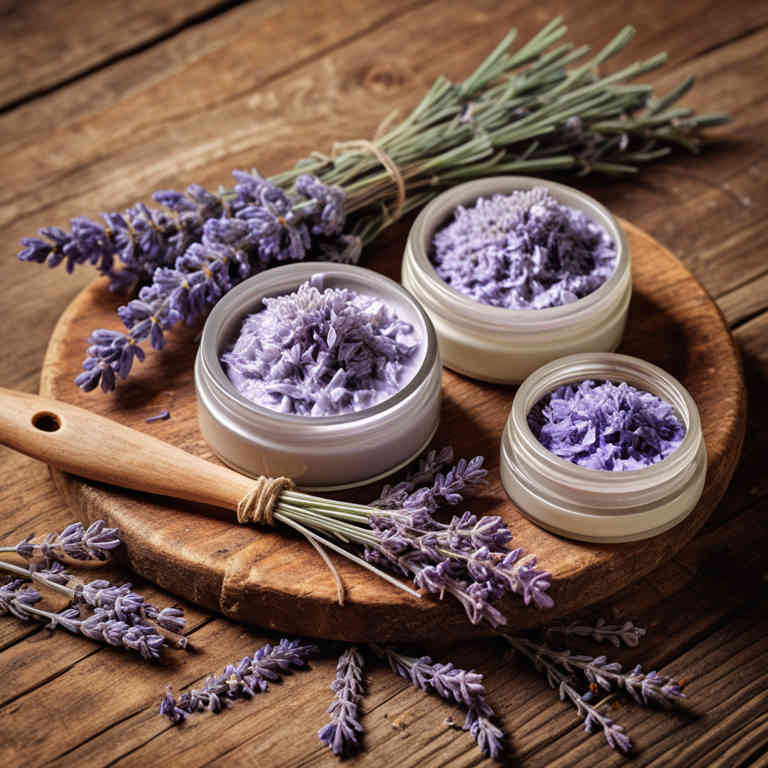
Herbal creams for premenstrual syndrome (PMS) are topical treatments that incorporate natural ingredients such as chamomile, lavender, and evening primrose oil, which are believed to have soothing and anti-inflammatory properties.
These creams are often used to alleviate physical symptoms like bloating, cramps, and skin irritations associated with PMS. Unlike oral supplements, herbal creams provide localized relief without systemic absorption, making them a gentler alternative for some individuals. They are generally considered safe for most people, though those with allergies or sensitive skin should exercise caution.
While they may not address all PMS symptoms, herbal creams can be a complementary approach to managing discomfort during the menstrual cycle.
FREE Herb Drying Checklist
How to make sure every batch retains maximum flavor, color, and aroma without the risk of mold or over-drying. Eliminate guesswork and trial-and-error, making herb drying faster, easier, and more efficient every time.
Table of Contents
1. Vitex agnus-castus
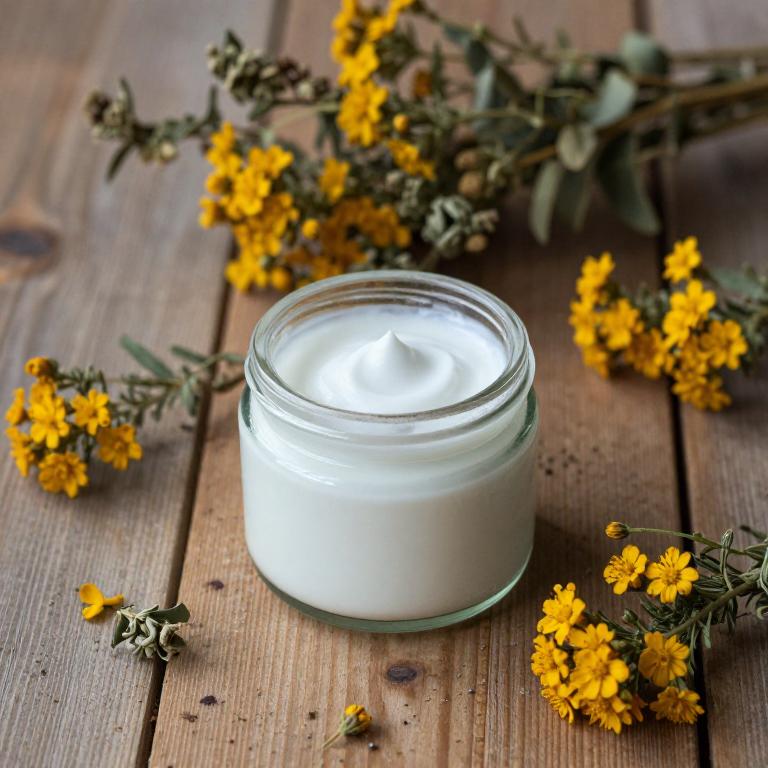
Vitex agnus-castus, commonly known as chasteberry, is often used in herbal creams to help alleviate symptoms of premenstrual syndrome (PMS).
These creams are believed to work by regulating hormonal imbalances, particularly those involving prolactin and estrogen, which are commonly associated with PMS. The active compounds in vitex may support the function of the hypothalamic-pituitary-ovarian axis, promoting more balanced menstrual cycles. While some studies suggest that vitex can reduce mood swings, bloating, and breast tenderness, it is important to consult a healthcare provider before use, especially for those with existing medical conditions or taking other medications.
Overall, vitex agnus-castus herbal creams may offer a natural alternative for managing PMS symptoms, though more research is needed to confirm their efficacy and long-term safety.
2. Matricaria chamomilla
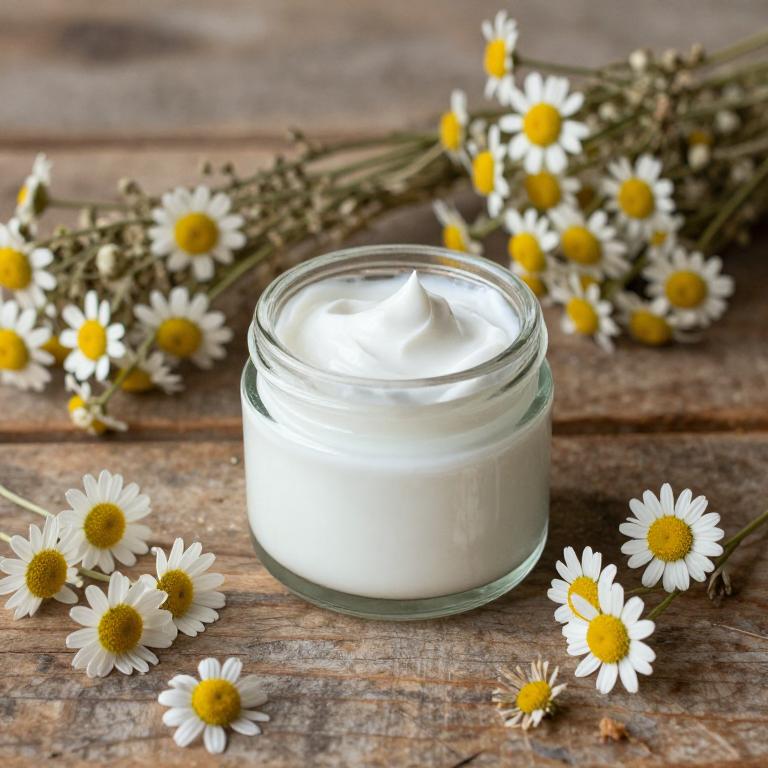
Matricaria chamomilla, commonly known as chamomile, is often used in herbal creams to help alleviate symptoms of premenstrual syndrome (PMS).
These creams typically contain chamomile essential oil or extracts, which are known for their anti-inflammatory and calming properties. When applied topically, they may help reduce cramps, bloating, and mood swings associated with PMS by promoting relaxation and easing muscle tension. Some studies suggest that the bioactive compounds in chamomile may have a soothing effect on the nervous system, potentially improving overall well-being during the premenstrual phase.
While herbal creams can be a complementary approach, it is advisable to consult a healthcare provider before using them, especially if combined with other treatments.
3. Zingiber officinale
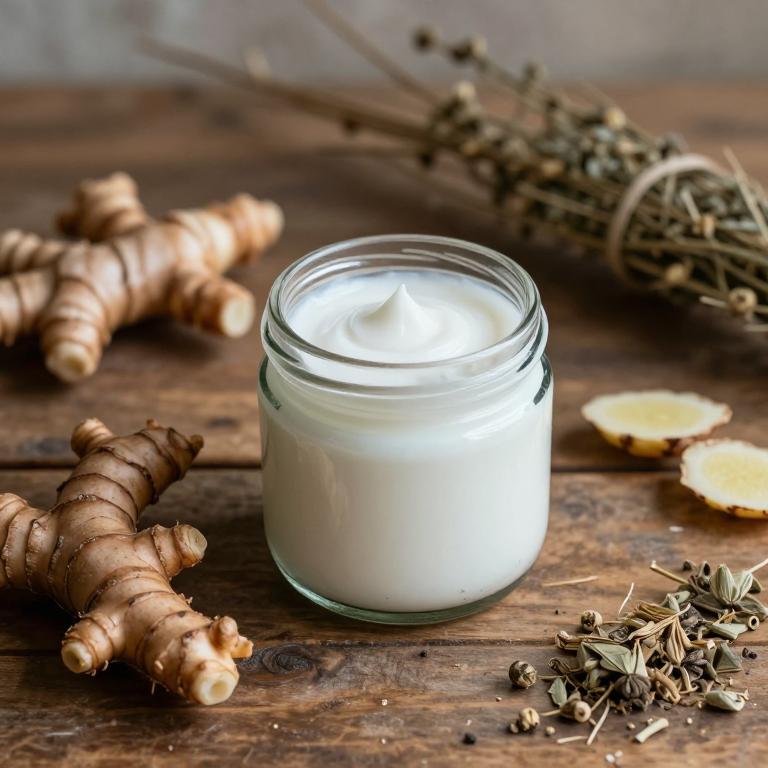
Zingiber officinale, commonly known as ginger, has been traditionally used for its medicinal properties, including its potential benefits for premenstrual syndrome (PMS).
Herbal creams containing zingiber officinale are formulated to provide localized relief from PMS symptoms such as bloating, cramps, and mood swings by leveraging the anti-inflammatory and analgesic properties of ginger. These creams are typically applied topically to the abdomen or lower back, where they can help reduce muscle tension and discomfort associated with menstrual cramps. The essential oils and bioactive compounds in ginger may also promote circulation and ease digestive discomfort linked to PMS.
While these creams are generally safe for topical use, it is advisable to consult a healthcare provider before using them, especially for individuals with sensitive skin or existing medical conditions.
4. Urtica dioica
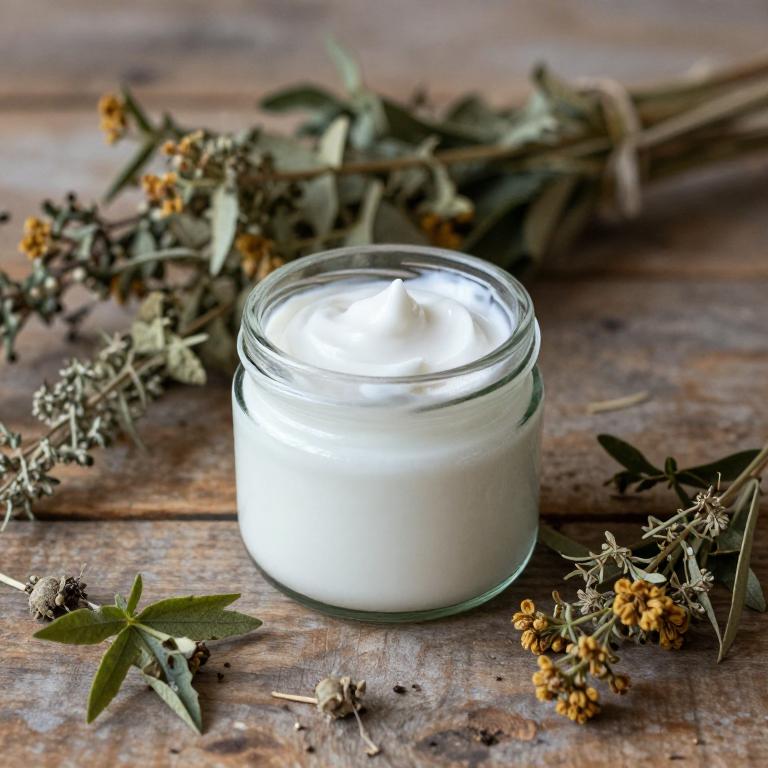
Urtica dioica, commonly known as stinging nettle, has been traditionally used in herbal medicine for its potential health benefits.
Urtica dioica herbal creams are formulated with extracts from the leaves of this plant, which are rich in nutrients such as vitamins, minerals, and anti-inflammatory compounds. These creams are sometimes used to alleviate symptoms of premenstrual syndrome (PMS), including bloating, cramps, and mood swings, due to their purported ability to reduce inflammation and support hormonal balance. While some studies suggest that nettle may help with PMS symptoms, more rigorous clinical research is needed to confirm its efficacy.
As with any herbal remedy, it is advisable to consult a healthcare professional before using urtica dioica creams, especially for individuals with allergies or existing medical conditions.
5. Cimicifuga racemosa
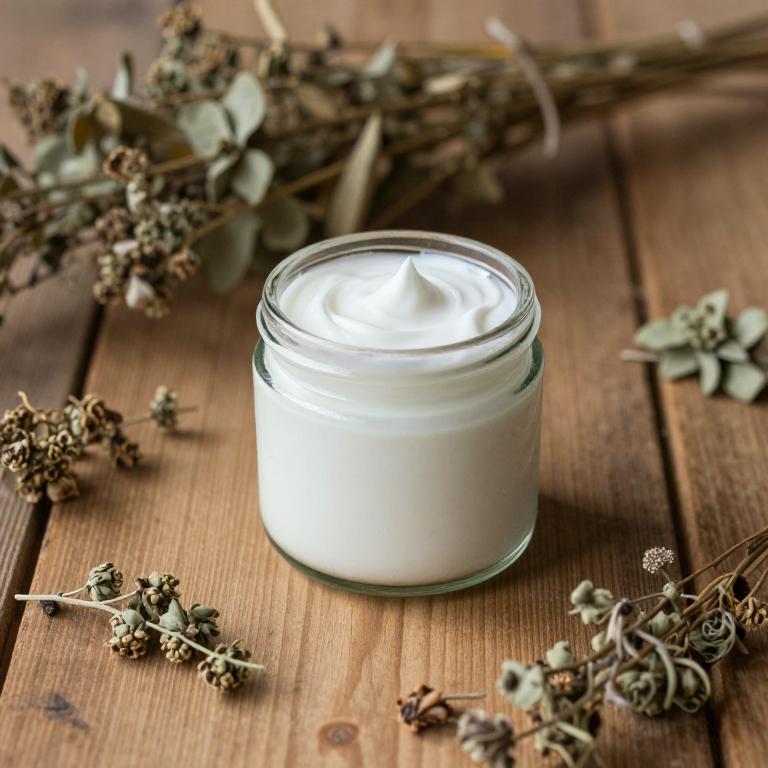
Cimicifuga racemosa, commonly known as black cohosh, is a herbal remedy that has been traditionally used to alleviate symptoms of premenstrual syndrome (PMS).
Herbal creams containing Cimicifuga racemosa are often applied topically to reduce cramping, bloating, and mood swings associated with PMS. These creams may work by influencing hormone levels and reducing inflammation in the body. While some studies suggest that black cohosh can be effective for PMS symptoms, it is important to consult a healthcare provider before use, especially for pregnant or breastfeeding women.
As with any herbal supplement, the safety and efficacy of Cimicifuga racemosa creams can vary, and they should not replace medical treatment without professional guidance.
6. Salvia officinalis
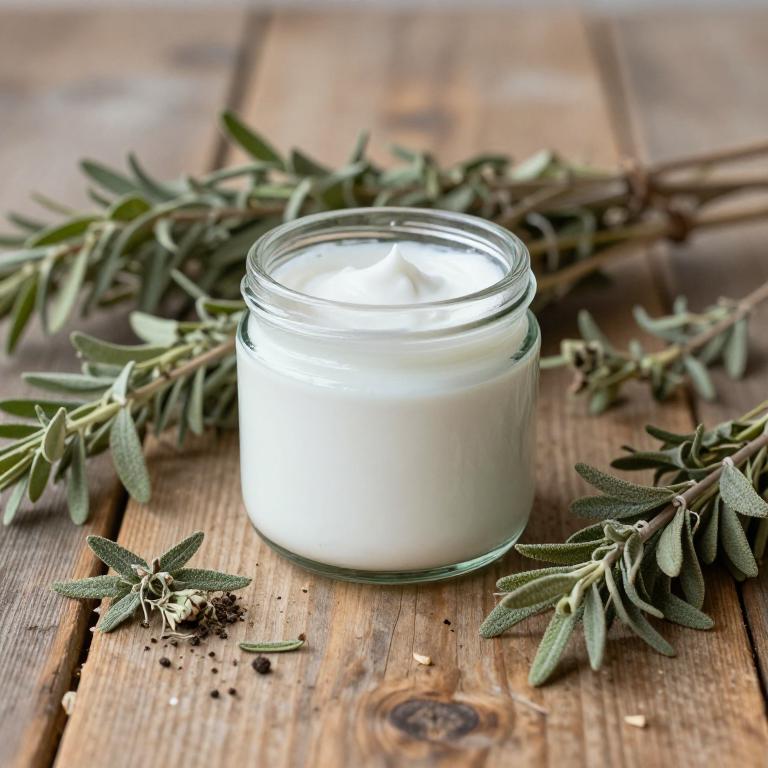
Salvia officinalis, commonly known as sage, has been traditionally used in herbal medicine for its potential benefits in managing premenstrual syndrome (PMS).
Recent studies suggest that sage-based herbal creams may help alleviate common PMS symptoms such as bloating, irritability, and mood swings by reducing hormonal fluctuations and inflammation. These creams typically contain essential oils and extracts from the leaves of the plant, which are believed to have calming and anti-inflammatory properties. When applied topically, sage creams may provide localized relief and support overall hormonal balance.
While more research is needed, some women report improved comfort and reduced discomfort during the premenstrual phase when using sage-based topical treatments.
7. Rosa canina
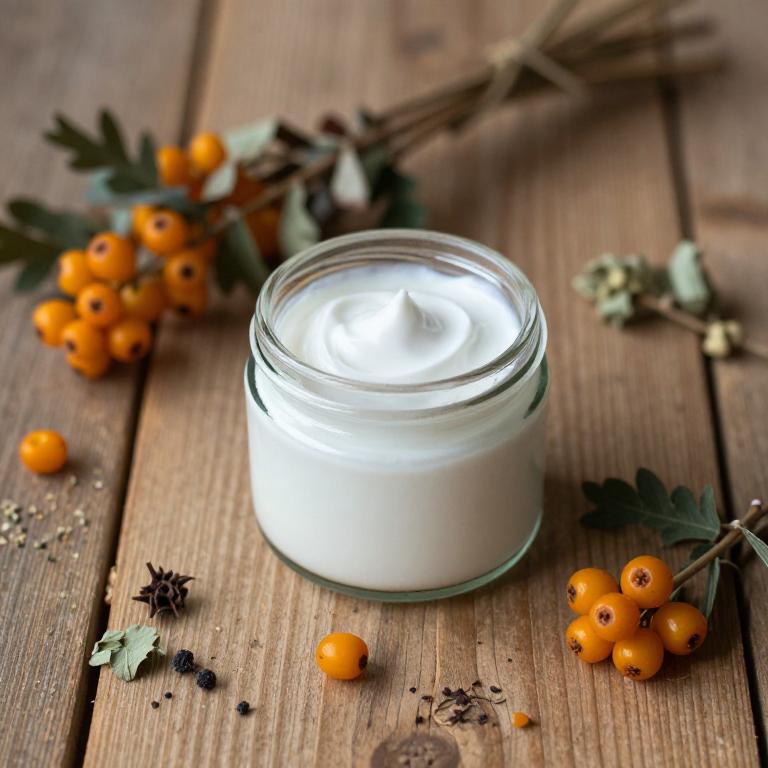
Rosa canina, also known as rosehip, is a traditional herbal remedy that has been used for centuries to support skin health and overall wellness.
Rosa canina herbal creams are formulated with the oils and extracts of the rosehip fruit, which are rich in essential fatty acids, antioxidants, and vitamins, particularly vitamin C. These creams are often recommended for their potential to alleviate symptoms of premenstrual syndrome (PMS), such as mood swings, bloating, and breast tenderness, due to their anti-inflammatory and mood-balancing properties. The anti-inflammatory compounds in rosehip may help reduce the physical discomfort associated with PMS, while the antioxidants support overall hormonal balance.
As a natural alternative to conventional treatments, rosa canina herbal creams are gaining popularity for their gentle and holistic approach to managing PMS symptoms.
8. Achillea millefolium
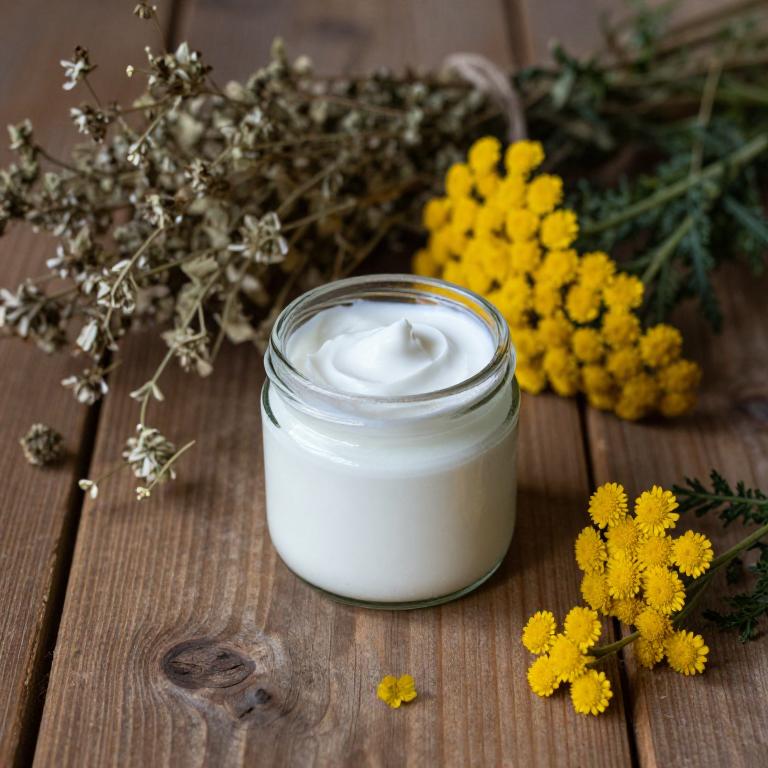
Achillea millefolium, commonly known as yarrow, has been traditionally used in herbal medicine for its potential benefits in alleviating symptoms of premenstrual syndrome (PMS).
Herbal creams containing yarrow are often formulated to reduce inflammation and soothe discomfort associated with menstrual cramps and breast tenderness. These creams may incorporate other complementary ingredients such as arnica or chamomile to enhance their therapeutic effects. While some studies suggest that yarrow may help regulate hormonal fluctuations, more research is needed to confirm its efficacy for PMS.
As with any herbal remedy, it is important to consult with a healthcare provider before use, especially for individuals with known allergies or medical conditions.
9. Nymphaea alba
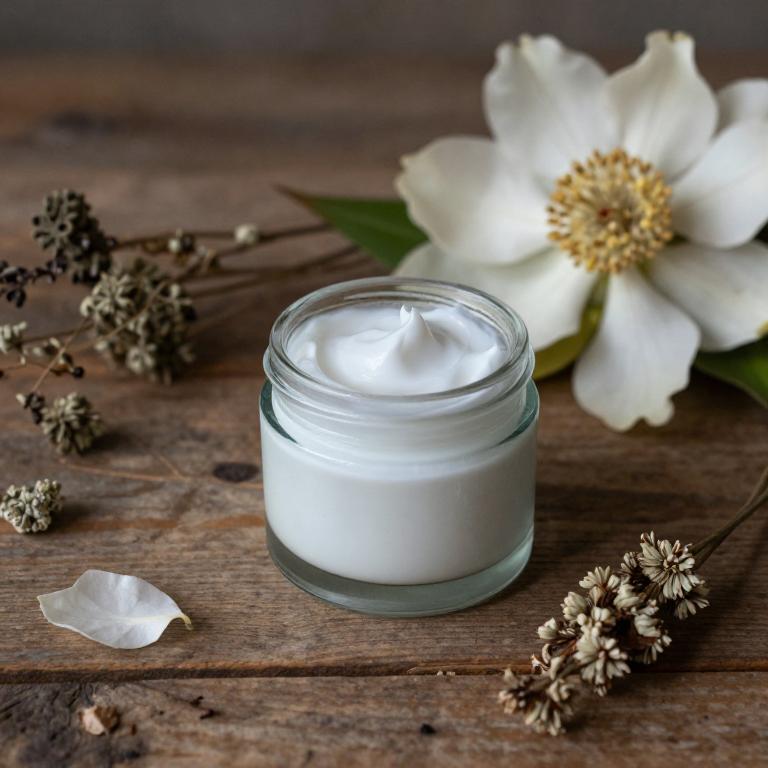
Nymphaea alba, also known as white water lily, has been traditionally used in herbal medicine for its potential soothing and calming properties.
Recent studies suggest that extracts from this plant may help alleviate symptoms of premenstrual syndrome (PMS), such as mood swings, bloating, and breast tenderness. Nymphaea alba herbal creams are formulated to provide topical relief by combining the plant's extract with other natural ingredients that enhance its effectiveness. These creams are often preferred by individuals seeking a natural alternative to conventional PMS treatments.
However, it is important to consult with a healthcare professional before using any herbal remedy to ensure safety and appropriateness for individual health conditions.
10. Foeniculum vulgare
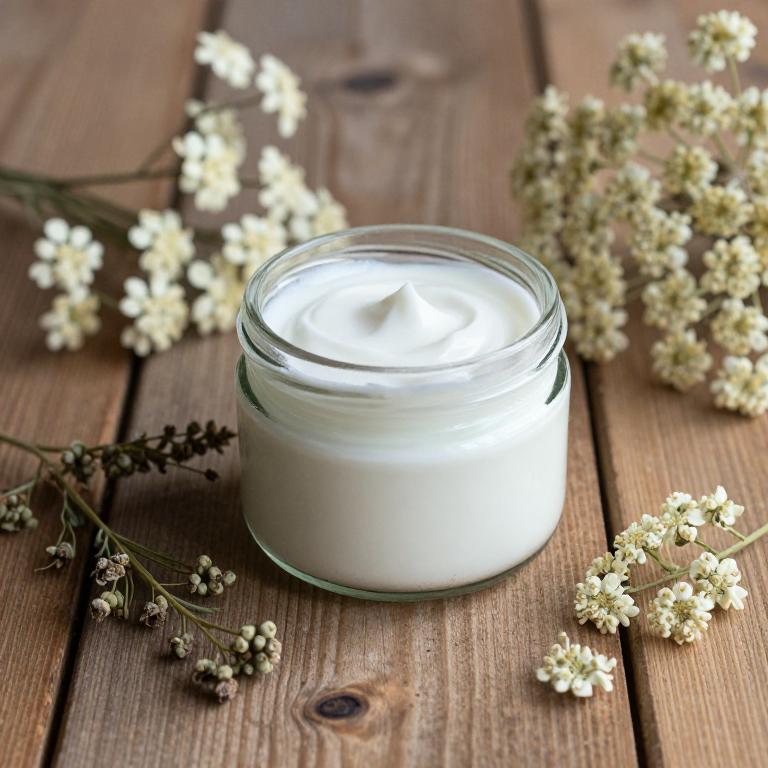
Foeniculum vulgare, commonly known as fennel, is often used in herbal creams to alleviate symptoms of premenstrual syndrome (PMS).
These creams typically contain essential oils derived from fennel seeds, which are known for their mild analgesic and anti-inflammatory properties. When applied topically, the warmth and soothing effect of the cream can help reduce cramps and discomfort associated with PMS. Many women find relief from bloating, mood swings, and breast tenderness by using fennel-based topical treatments.
However, it is important to consult a healthcare provider before using these creams, especially if you have sensitive skin or are pregnant.